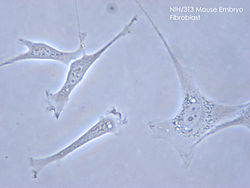
Aging is inevitable, but the rate of aging is not. In my recent blog post, Causes of Aging – Our Environment and Food, I proposed why we age was due to the errors in our mitochondrial DNA, due primarily to oxidative stress or more directly related to the food we eat, the water we drink and the air we breathe, and also result from inflammation, infection, and mass consumption of alcohol and cigarettes.
In recent years noteworthy geneticists, gerontologists and healthcare practitioners have generally accepted and shared this mutational theory. But hold the phone. Now at the University of Tsukuba in Tokyo, Professor Hayashi and his team made a unique discovery while in the process of addressing some controversial issues surrounding the popular theory of aging alluded to above.
The mitochondrial theory of aging, proposes that age-associated mitochondrial defects are controlled by the accumulation of mutations in the mitochondrial DNA. Abnormal mitochondrial function is one of the hallmarks of aging in many species, including humans. This is mostly due to the fact that the mitochondrion is the so-called powerhouse of the cell as it produces energy in a process called cellular respiration. Damage to the mitochondrial DNA results in changes or mutations in the DNA sequence. Accumulation of these changes has been associated with age-related diseases, a reduced lifespan and early onset of aging-related characteristics such as weight gain and hair loss, curvature of the spine and osteoporosis.
There is, however, a growing body of conflicting evidence that has raised doubts about the validity of this theory. The Tsukuba team has performed some compelling research that has led them to propose that age-associated mitochondrial defects are not controlled by the accumulation of mutations in the mitochondrial DNA but by another form of genetic regulation. The research, published this month in the journal Nature’s Scientific Reports, looked at the function of the mitochondria in human fibroblast cell lines derived from young people (ranging in age from a fetus to a 12 year old) and elderly people (ranging in age from 80-97 years old). The researchers compared the mitochondrial respiration and the amount of DNA damage in the mitochondria of the two groups, expecting respiration to be reduced and DNA damage to be increased in the cells from the elderly group. While the elderly group had reduced respiration, in accordance with the current theory, there was, however, no difference in the amount of DNA damage between the elderly and young groups of cells. This led the researchers to propose that another form of genetic regulation, epigenetic regulation, may be responsible for the age-associated effects seen in the mitochondria.
Epigenetic regulation refers to changes, such as the addition of chemical structures or proteins, which alter the physical structure of the DNA, resulting in genes turning on or off. Unlike mutations, these changes do not affect the DNA sequence itself. If this theory is correct, then genetically reprogramming the cells to an embryonic stem cell-like state would remove any epigenetic changes associated with the mitochondrial DNA. In order to test this theory, the researchers reprogrammed human fibroblast cell lines derived from young and elderly people to an embryonic stem cell-like state. These cells were then turned back into fibroblasts and their mitochondrial respiratory function examined. Incredibly, the age-associated defects had been reversed — all of the fibroblasts had respiration rates comparable to those of the fetal fibroblast cell line, irrespective of whether they were derived from young or elderly people. This indicates that the aging process in the mitochondrion is controlled by epigenetic regulation, not by mutations.
Epigenetic regulation describes anything other than DNA sequence that influences the development of an organism, while mitochondrial theory represents any form of DNA genetic regulation.
The researchers then looked for genes that might be controlled epigenetically resulting in these age-associated mitochondrial defects. Two genes that regulate glycine production in mitochondria, CGAT and SHMT2, were found. The researchers showed that by changing the regulation of these genes, they could induce defects or restore mitochondrial function in the fibroblast cell lines. In a compelling finding, the addition of glycine for 10 days to the culture medium of the 97 year old fibroblast cell line restored its respiratory function. This suggests that glycine treatment can reverse the age-associated respiration defects in the elderly human fibroblasts.
These findings reveal that, while aging is inevitable, the rate of aging is not, and contrary to the mitochondrial theory of aging, epigenetic regulation controls age-associated respiration defects in human fibroblast cell lines. Can epigenetic regulation also control aging in humans? That theory remains to be tested, and if proven, could result in glycine supplementation that gives seniors a new lease of life. But before you rush to your local Walgreens or GNC for that bottle of glycine, longer, larger and more studies need to take place. The next logical step would be to see if glycine and the two genes can be regulated to reverse the ageing process.

Recent Comments